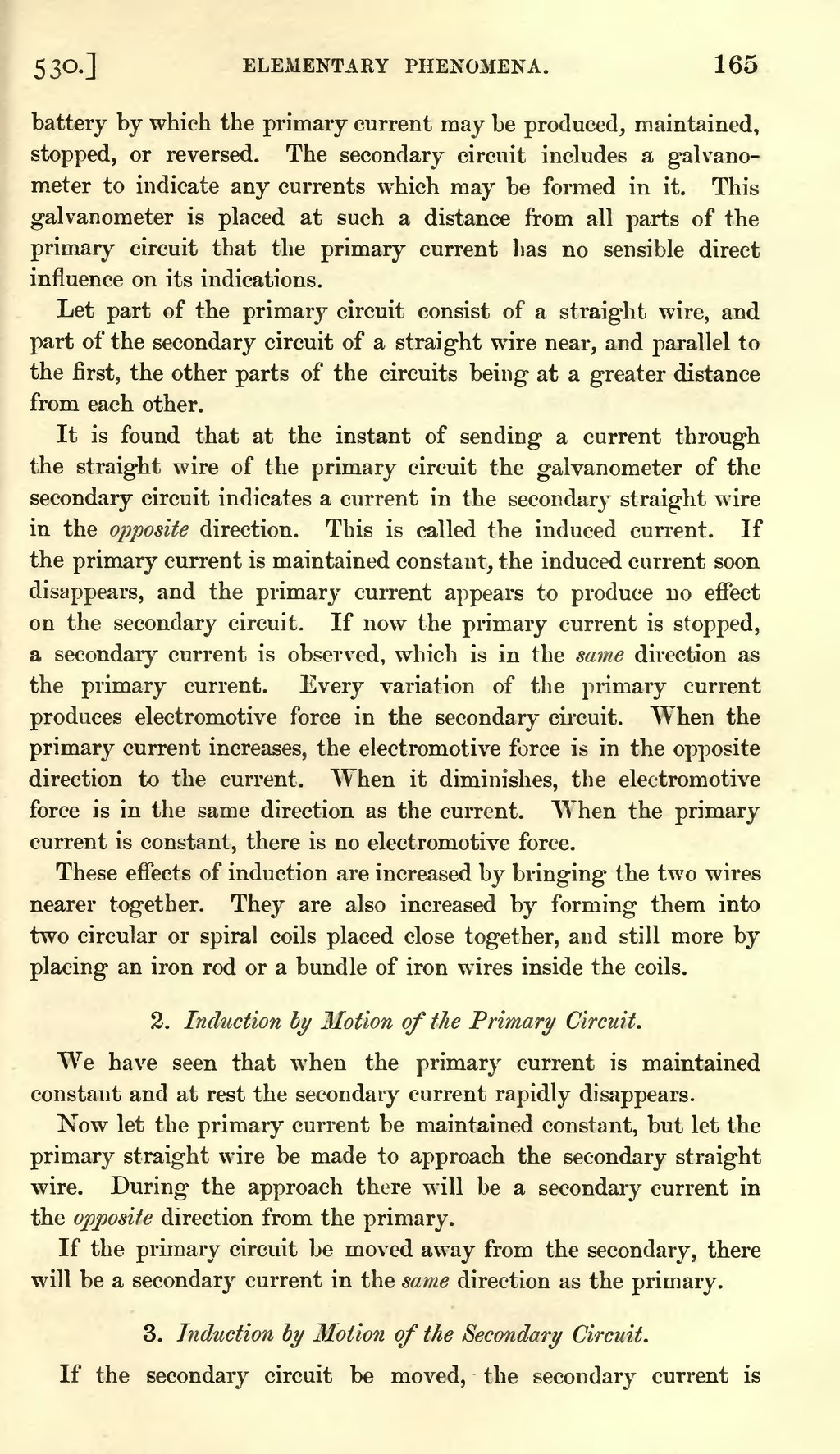battery by which the primary current may be produced, maintained, stopped, or reversed. The secondary circuit includes a galvanometer to indicate any currents which may be formed in it. This galvanometer is placed at such a distance from all parts of the primary circuit that the primary current has no sensible direct influence on its indications.
Let part of the primary circuit consist of a straight wire, and part of the secondary circuit of a straight wire near, and parallel to the first, the other parts of the circuits being at a greater distance from each other.
It is found that at the instant of sending a current through the straight wire of the primary circuit the galvanometer of the secondary circuit indicates a current in the secondary straight wire in the opposite direction. This is called the induced current. If the primary current is maintained constant, the induced current soon disappears, and the primary current appears to produce no effect on the secondary circuit. If now the primary current is stopped, a secondary current is observed, which is in the same direction as the primary current. Every variation of the primary current produces electromotive force in the secondary circuit. When the primary current increases, the electromotive force is in the opposite direction to the current. When it diminishes, the electromotive force is in the same direction as the current. When the primary current is constant, there is no electromotive force.
These effects of induction are increased by bringing the two wires nearer together. They are also increased by forming them into two circular or spiral coils placed close together, and still more by placing an iron rod or a bundle of iron wires inside the coils.
2. Induction by Motion of the Primary Circuit.
We have seen that when the primary current is maintained constant and at rest the secondary current rapidly disappears.
Now let the primary current be maintained constant, but let the primary straight wire be made to approach the secondary straight wire. During the approach there will be a secondary current in the opposite direction from the primary.
If the primary circuit be moved away from the secondary, there will be a secondary current in the same direction as the primary.
3. Induction by Motion of the Secondary Circuit.
If the secondary circuit be moved, the secondary current is
